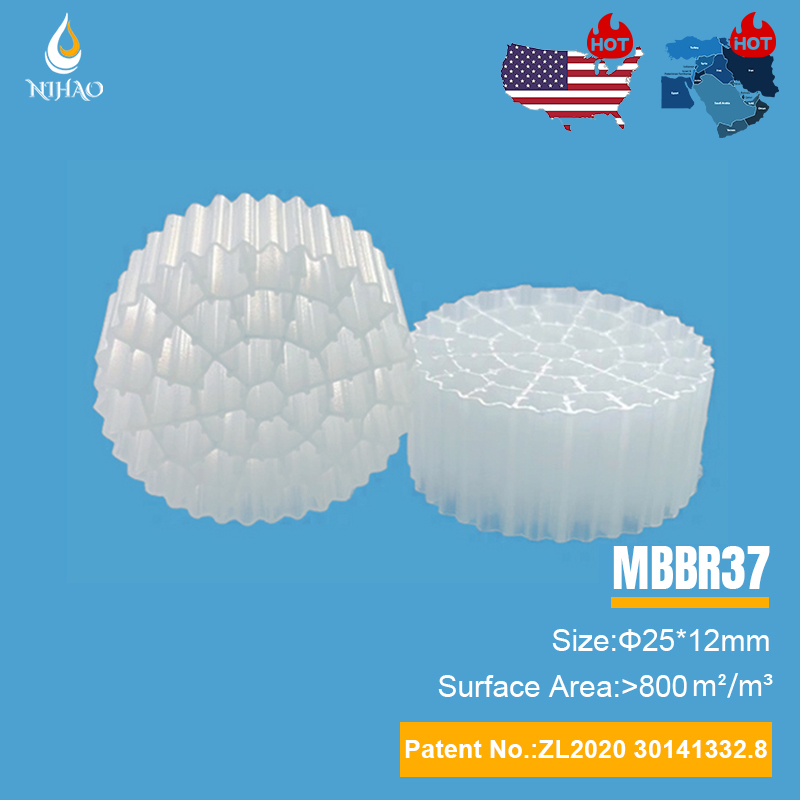 +86-15267462807
+86-15267462807
Hangzhou NIHAO Environmental Tech Co., Ltd will showcase projects from different industries and highlight the specific challenges they faced, the MBBR solutions implemented, and the outcomes achieved.
Overview: The municipal wastewater treatment plant was facing challenges due to increased population and aging infrastructure. The existing treatment processes were unable to handle the growing volume of wastewater, leading to compliance issues and reduced treatment efficiency.
MBBR Solution: The plant implemented MBBR technology as an upgrade to their existing treatment system. MBBR biofilter media were installed in separate reactors to create a large surface area for microbial growth. This facilitated the attachment and growth of biofilm, which effectively treated organic matter and improved treatment capacity.
Results:
Increased treatment capacity by 30%, allowing the plant to handle higher flow rates and loadings.
Improved effluent quality with reduced levels of organic pollutants and suspended solids.
Enhanced treatment efficiency, resulting in better compliance with regulatory standards.
Cost savings through reduced energy consumption and chemical usage.
Overview: An industrial plant was struggling with the treatment of high-strength effluent generated from its production processes. The complex composition of the effluent posed challenges for conventional treatment methods, leading to compliance issues and environmental concerns.
MBBR Solution: MBBR technology was implemented as a pre-treatment step to complement the existing treatment infrastructure. The MBBR system provided a robust and versatile solution for handling the high-strength effluent. The biofilm media provided a favorable environment for a diverse microbial community to break down complex organic compounds.
Results:
Increased treatment capacity, enabling the plant to handle the high-strength effluent effectively.
Significant reduction in pollutant levels, ensuring compliance with stringent discharge regulations.
Improved operational stability, reducing the risk of system upsets and downtime.
Enhanced overall treatment efficiency, minimizing the environmental impact of the plant's operations.
Overview: In response to water scarcity concerns, a water reuse project was initiated to reclaim and treat wastewater for various non-potable applications. The project aimed to reduce the reliance on freshwater sources and conserve water resources.
MBBR Solution: MBBR technology was incorporated into the water treatment process to achieve high-quality reclaimed water. The MBBR system efficiently removed organic matter, nitrogen, and phosphorus, while providing robust disinfection capabilities. This ensured the production of reclaimed water that met stringent quality standards.
Results:
Successful production of reclaimed water suitable for various non-potable applications.
Reliable removal of organic matter, nitrogen, and phosphorus, meeting regulatory requirements.
Reduced demand for freshwater resources, contributing to sustainable water management.
Enhanced public perception and acceptance of water reuse initiatives.
Overview: An existing wastewater treatment plant faced the challenge of expanding its treatment capacity due to population growth and urban development. The plant needed a cost-effective solution to accommodate increased wastewater flows while maintaining treatment performance.
MBBR Solution: MBBR technology was chosen as a flexible and scalable solution for the plant's expansion. Additional MBBR reactors were added to the treatment train to increase the biological treatment capacity. The modular nature of MBBR systems allowed for seamless integration into the existing infrastructure.
Results:
Successful expansion of treatment capacity to meet the increased wastewater flows.
Improved treatment performance with consistent effluent quality and compliance with regulations.
Cost-effective solution compared to traditional infrastructure expansion options.
Minimal disruption to the plant's operations during the expansion process.
These case studies illustrate how MBBR technology can be tailored to specific water treatment challenges, leading to improved treatment capacity, enhanced efficiency, and sustainable solutions across various applications.